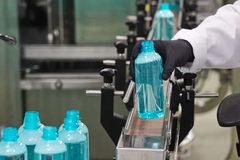Finland’s VTT research center launches multi-million airlaid tech initiative for web-formed fiber
26 Aug 2024 --- VTT Technical Research Centre of Finland is experimenting with an “entirely new technology” to create lighter fiber-based products using air-laid technology — a method of forming webs to craft material by mixing fibers with air, forming a uniform air-fiber mixture.
The institution has launched its Energy First Initiative to develop and test these “commercially viable, lighter and more sustainable” alternatives for cardboard packaging, hygiene products and non-woven fabrics.
In addition to reducing water, energy consumption and carbon emissions, the project seeks to make its recyclable products lighter so that more products could be produced from the same amount of wood for consumer use.
The initiative, which has a budget of around EUR 20 million (US$22.4 million) over the next four years, consists of several projects and will establish an open-access pilot line in Jyväskylä, Finland.
Atte Virtanen, vice president at Biomaterial Processing and Products at VTT, sees the new initiative as a “pivotal step” toward creating more “competitive” fiber-based sustainable products.
“We are excited about the prospect of 1:1 commercial projects with companies, driving innovation in energy-efficient paper board production,” she comments.
“VTT’s purpose is to bring together people, business, science and technology, paving the way to a sustainable future. The Energy First theme aims to do just that.”
Compatibility with existing recycling methods
The research center highlights that the demand for various fiber-based packaging solutions is projected to grow 5–10% annually, particularly driven forward by continued growth in global e-commerce.
Working with more than 50 industrial partners on the project, VTT expects a substantial shift from traditional products that contain plastic to cellulose-based products in non-woven items used in napkins and wipes.
The initiative will tailor products manufactured using the new process to be compatible with existing recycling methods.
Preliminary estimates by VTT’s scientists suggest that the new manufacturing process will potentially reduce water consumption by up to 90% and carbon emissions significantly. The goal is to reduce energy consumption by up to 50%.
“We feel that the Energy First project is one of the first steps in unlocking the full potential of airlaid technology in sustainable single-use and durable product categories,” says Tuukka Vihtakari, CTO at Anpap.
“Compared to wetlaid, airlaid web forming is flexible and consumes dramatically less natural resources, such as water, which reduces the environmental impact of manufacturing while satisfying the needs of consumers.”
The European Regional Development Fund, VTT and the collaborating companies are funding the initiative. The consortium is also actively engaged in EU projects, such as EU SteamDry, which has a total budget of EUR 9.84 million (US$11 million) over 3.5 years.
VTT will actively continue developing new projects as a part of the initiative, including bilateral cooperation with industrial partners.












